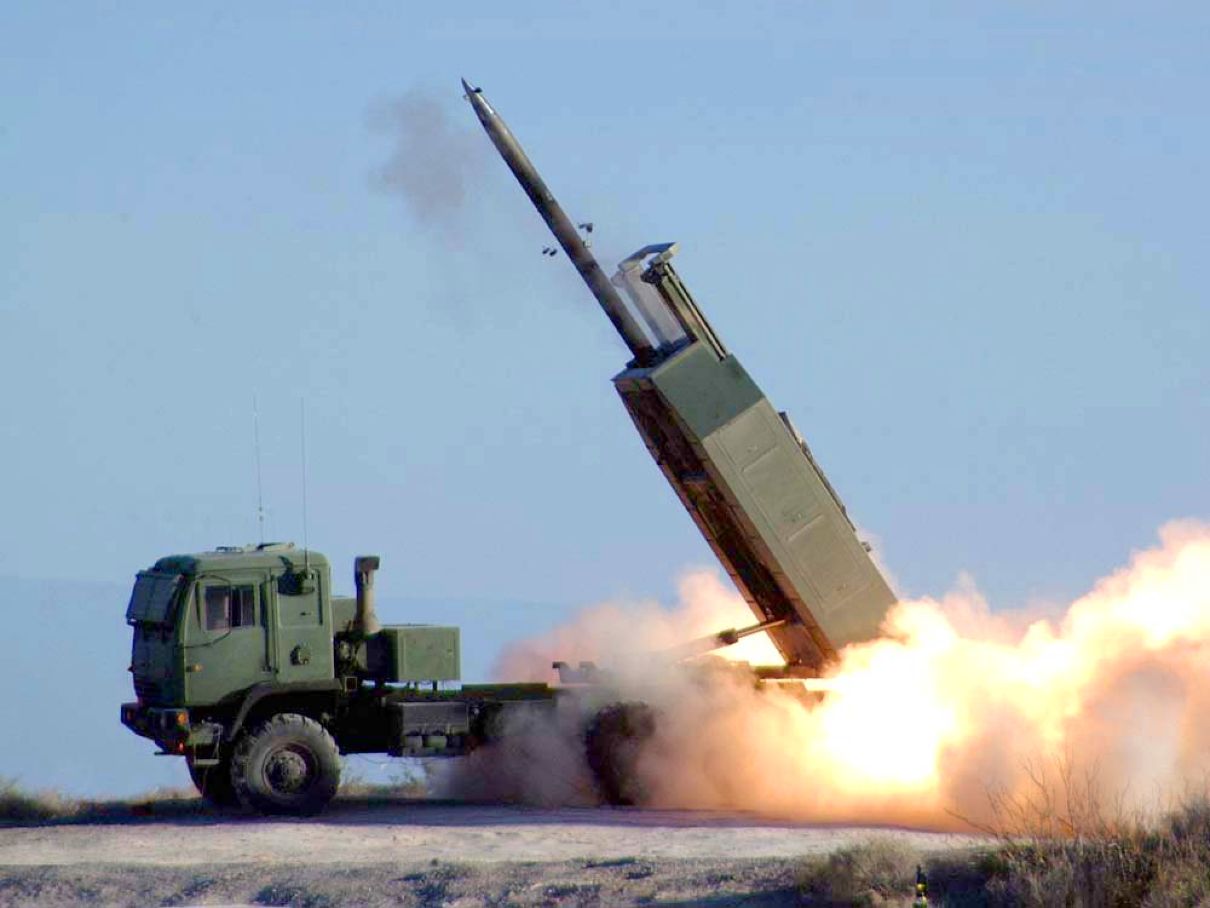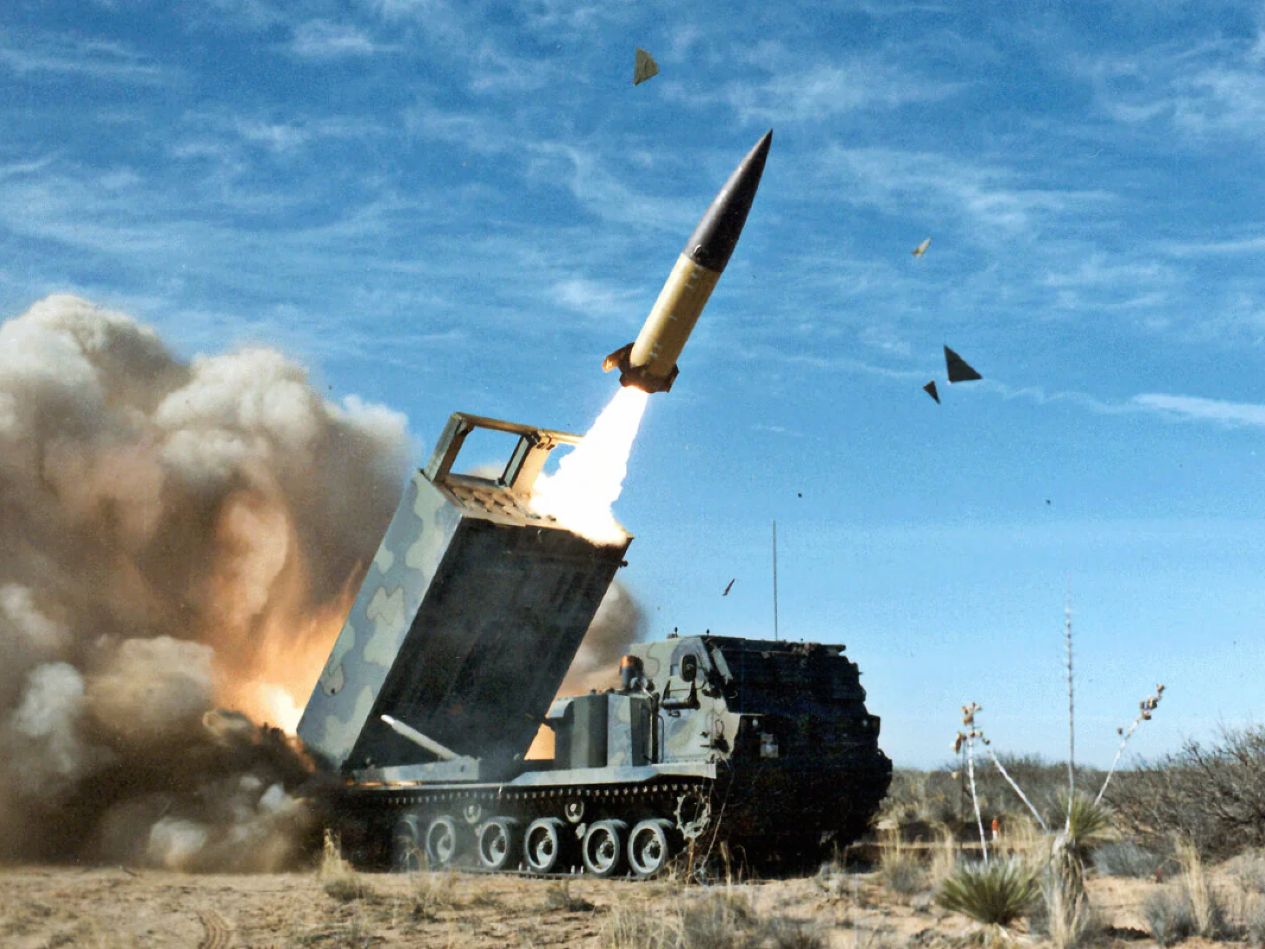At a time when Ukraine has stepped up its requests for the US-made Army Tactical Missile System, or the ATACMS, the US Army stated that it fired the weapon in Australia for the first time.
Israel’s ‘Most Advanced’ Defense System To Be Deployed In Russia’s Backyard; US Approves Sale Of David’s Sling To Finland
The MGM-140 ATACMS are surface-to-surface missiles fired from multiple launch rocket systems, including the US-made M142 High Mobility Artillery Rocket System (HIMARS).
ATACMS munitions have a range of over 300 kilometers and have been making headlines ever since war-torn Ukraine started a campaign for their delivery to Kyiv.
The missile launch in Australia was part of the extensive large-scale military training exercise taking place in the country, including several live firing tests. In late July, the live firing was reportedly conducted from an M142 High Mobility Artillery Rocket System (HIMARS) launcher from the Delamere Air Weapons Range in the Northern Territory.
US Marine Corps and Australian military personnel also backed the live-fire training exercise. The complete exercise, which started on July 22 and is scheduled to end on August 4, has 30,000 soldiers from 13 different countries participating and has been projected as one being hosted to protect against regional security threats like China.
A press statement earlier issued by Australian Defense Department stated, “The US firepower consisted of the M142 high mobility rocket artillery system (HIMARS) and M777A2 howitzers, with an aerial assault from the F-35B Lightning II, AC-130, AH-IZ Viper, and the AH-1 Super Cobra.”
A U.S. Army High Mobility Artillery Rocket System launches an MGM-140 Army Tactical Artillery Missile #ATACMS System during #TalismanSabre 23 at Delamere Air Weapons Range, Northern Territory, Australia, July 27, 2023. (📸Tylir Meyer) pic.twitter.com/UxupUkckvd
— AirPower 2.0 (MIL_STD) (@AirPowerNEW1) August 1, 2023
The missile was launched by an M142 High Mobility Artillery Rocket System (HIMARS) launcher from the 17th Field Artillery Brigade of the Army. The HIMARS was swiftly transported to its firing position with the assistance of the US Air Force MC-130J Commando II special operations tanker/transport aircraft.
The 1st Lieutenant Joseph McCrystal said, “So the Air Force allows us to load up on their birds to get to where we need to be and to put our HIMARS in a position that we can provide the long-range, accurate fires and destroy the target. HIMARS offers you a long-range capability with speed, accuracy, and precision.”

The Australian defense forces are about to acquire the HIMARS MLRS, so the firing from this system has been seen as a preview of what is coming for them. In January this year, Canberra announced plans to buy Lockheed Martin High Mobility Artillery Rocket Systems (HIMARS) and related components.
The HIMARS launcher was transported from eastern Australia to the Northern Territory as part of the drills. HIMARS was specifically created to have good cross-country mobility and be transportable using the C-130 Hercules series cargo aircraft the Royal Australian Air Force (RAAF) already has.
A US MGM-140 Army Tactical Missile System was fired for the first time on Australian soil as part of #TalismanSabre2023.
The surface-to-surface missile was fired at a target in the Bradshaw Field Training Area, from Delamere Air Weapons Range. pic.twitter.com/jENdPGqg9D
— Talisman Sabre (@TalismanSabre) August 2, 2023
This may be very helpful for a Pacific country like Australia, where moving assets across the country takes a lot of logistical work. Besides, Canberra’s acquisition is an attempt to build resilience and combat capability against China as the threat of an Indo-Pacific conflict continues to grow.
Land-based long-range fires have been one of the key recommendations of Australia’s Defense Strategic Review, meticulously prepared with a focus on the overarching China threat.
In addition to the ATACMS or HIMARS MLRS, the Australian Defense is also buying Naval Strike Missiles and accruing long-range capability with an eye on the Chinese PLA. On its part, the US military has recently shown a resurgence of interest in ground-based standoff strike capabilities, especially with the stunning combat performance of the HIMARS in Ukraine.
Intriguingly, the US Army’s firing of the ATACMS missiles comes when Kyiv continues to relentlessly plead for it from the US while the latter keeps sitting on the proposal.
Ukraine Wants ATACMS But No Breakthrough Yet!
Ukraine has been pleading for ground-launched long-range rocket systems like the ATACMS with the United States for months, long before Ukrainian troops launched their ongoing counteroffensive against Russia or got their hands on the long-range air-launched missiles like the British Storm Shadow.
In January, President Volodymyr Zelensky said in a video address, “Ukraine needs long-range missiles to deprive the occupier of the opportunity to place its missile launchers somewhere far from the front line and destroy Ukrainian cities.”
In June, there were speculations that the US could finally deliver Army Tactical Missile System (ATACMS) to Ukraine as the draft defense bill allocated US$80 million to purchase the weapon for Kyiv’s military.
At the time, EurAsian Times had noted that since the US would not send the ATACMS to Ukraine from its military stockpiles, any such transfer would necessitate purchases and transactions between the government and the market, resulting in a longer duration.
Since the beginning of this year, Zelensky and other Ukrainian officials have seized every chance to lobby for the system, often at different global forums. They believe the ATACMS’ 300-kilometer range, specifically created to satisfy the US Army’s requirement, is crucial for eliminating Russian command centers, logistics hubs, and reserve troops in back areas.
These appeals have grown louder since Ukraine launched its much-anticipated counteroffensive in June. The Ukrainian forces have been launching attacks on Russian territory, including on Crimea, which was annexed by Russia in 2014.

Using ATACMS, Ukrainian forces could attack any hostile installations or airfields in the Crimea, Russian supply lines, and storage areas. This would include the 19-kilometer-long Kerch Bridge, one of Putin’s favorite projects, which has both symbolic and strategic relevance as the peninsula’s only direct supply route from the Russian mainland.
The White House is yet to formally make a decision or an announcement regarding the transfer of ATACMS to Ukraine. However, Ukraine is relentless in its appeals, hoping that the Americans would cave in as they did on the issue of transferring Patriot air defense and Abrams Main Battle Tanks.
In a press conference held in Prague on July 7, Zelensky raised the issue again, saying, “Without long-range weapons, it is difficult not only to carry out an offensive mission but also to conduct a defensive operation.”
Later that month, on July 20, Zelensky’s chief of staff, Andriy Yermak, said ATACMS was at the top of Ukraine’s wish list for weapons. “At this point, it’s very clear and understandable,” he said. “We need and are waiting for decisions on ATACMS.”
- Contact the author at sakshi.tiwari9555 (at) gmail.com
- Follow EurAsian Times on Google News




